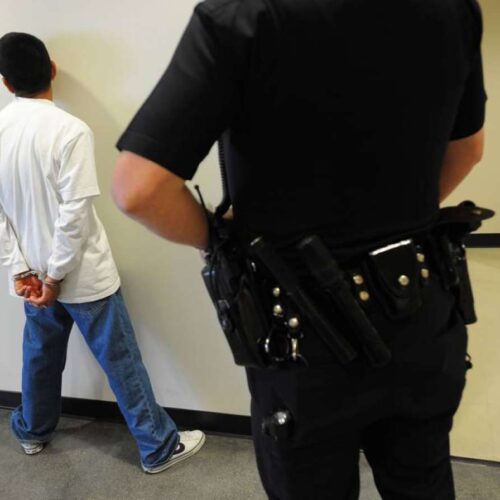Introduction
The United States still leads the industrialized world in incarcerating young people, and ethnic-minority kids are still locked up more than whites.
But there is good news: Since 1995, the rate at which states confine young people has been steadily dropping for all ethnic groups, reaching the lowest rate in 35 years in 2010, according to a report released Wednesday by the Annie E. Casey Foundation.
In 1975, the child welfare and research group found, the number of youth aged 20 or younger placed in lockup began climbing, reaching a peak in 1995 of 381 kids locked up for every 100,000 nationwide. That same year, though, the rate began declining, dropping by an impressive 41 percent between 1995 and 2010 to 225 per 100,000.
The report by the Baltimore-based foundation also notes that the reduction in incarceration rates has not been accompanied by any increases in crime. “On the contrary,” the report says, “crime has fallen sharply even as juvenile justice systems have locked up fewer delinquent youth.”
Laura Speer, associate director of policy reform and data at Casey, said in an interview that the report’s “main take away is that this is positive trend.”
However, Speer said, some states still show relatively higher propensities for locking up youths – South Dakota is one – and across the country, black youth are nearly five times more likely to be confined than whites. Latino and American Indian youth are between two and three times more likely than whites to be locked up.
“There is still a way to go, across the country, to get equities in the way kids are treated throughout the juvenile-justice system,” Speer said.
She cited several factors for contributing to the overall decline in youth incarceration.
One, she said, is the impact of lawsuits that have been filed in various states to expose allegations of abusive conditions inside state-run youth detention centers.
Another, Speer said, is a growing acceptance nationally of research showing that locking up most youth offenders only increases their chances of getting into more trouble later.
In addition, Speer said, even if they haven’t wanted to, state legislators have been pushed by state budget crises to deinstitutionalize youth who’ve been sentenced to do time inside costly prisons.
Instead, many wards have been shifted to cheaper county-based custody or community-based treatment. California and New York are among those states, as the Center for Public Integrity has reported. The Center receives funding from the Casey Foundation.
The figures cited in Casey’s new report are based on a survey of confined populations conducted by the U.S. Census Bureau and the U.S. Department of Justice’s Office of Juvenile Justice and Delinquency Prevention.
Speer pointed to another finding in the report that shatters assumptions held by many.
Most kids in lockup in 2010, the report says, were not there because they had committed violent offenses or robbery. Only one in four youths was confined for such serious reasons.
Instead, nearly 40 percent of detentions and commitments to juvenile lockup were for drug possession, technical probation violations and “status” offenses, infractions that only minors commit, such as truancy or underage purchase or possession of alcohol.
“The majority of these young people don’t pose a risk,” Speer said. Many experts are continuing to press states to stop locking up status offenders and other youth accused of relatively minor offenses.
Nonetheless, Speer said, the Casey Foundation is encouraged by changes it sees.
A vast majority of states — 44 out of 50 — experienced reductions in numbers of confined wards between 1997 and 2010. Several states, including Arizona and Georgia, cut their numbers by 50 percent or more.
On the global stage, Speer said, the United States has a lot of work still to do to drive down youth incarceration rates to those in comparable industrialized nations.
In 2010, she said, the rate at which American youth were locked up was 225 per 100,000. In 2008, in England, according to the latest data Speer had, the rate was about 47 per 100,000. In Australia, the rate of youth lockup in 2008 was about 30 per 100,000.
Read more in Education
Juvenile Justice
Discriminatory discipline: Feds and Mississippi school district reach agreement on changes
Cops were “taxi service” to jail; black students suspended far more than whites for same allegations
Juvenile Justice
Controversy over cops in schools flares anew
Post-Newtown worries over security conflict with concerns that school cops are putting too many kids in the criminal justice system


Join the conversation
Show Comments